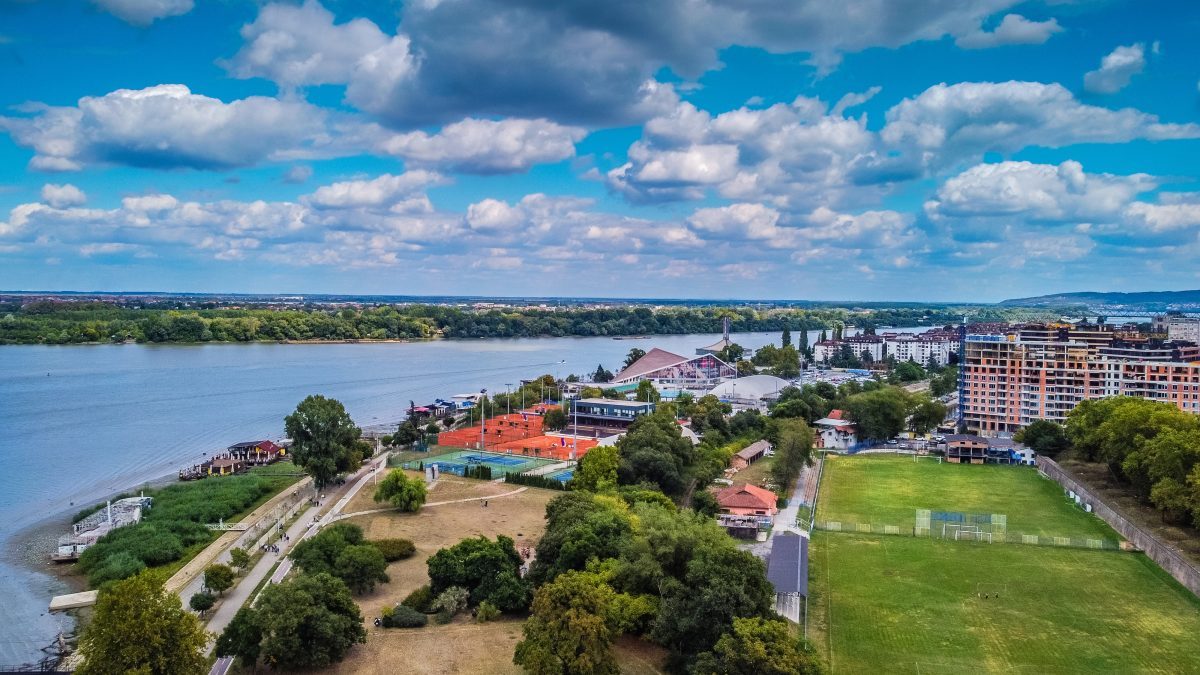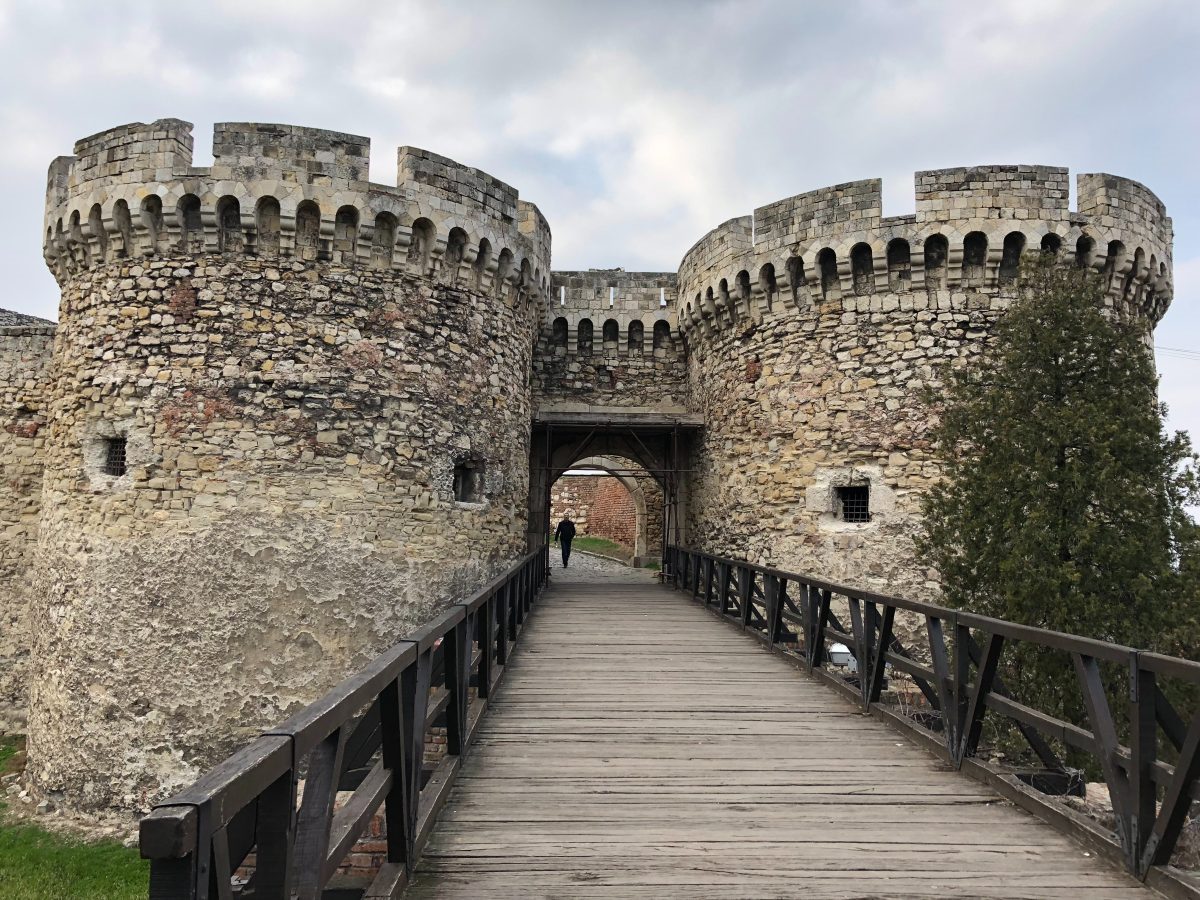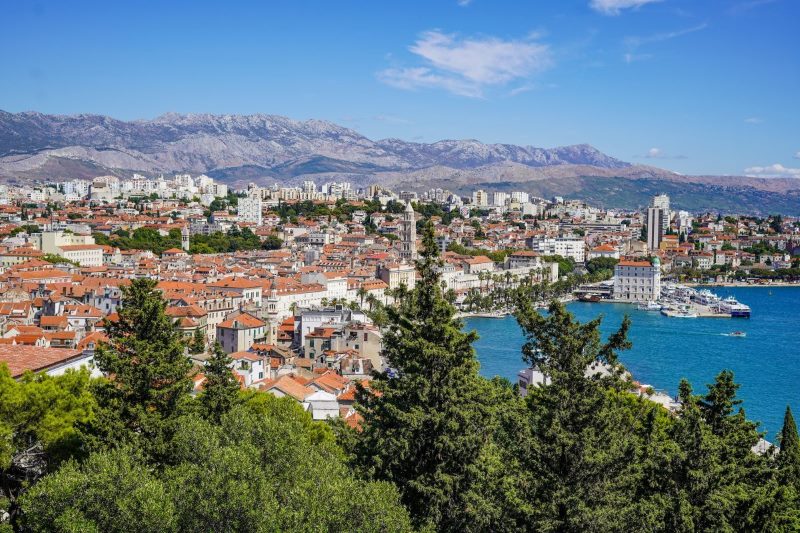How to Plan Your Medieval Monasteries and Resava Cave Tour in Belgrade
If you are planning a trip to Belgrade and are interested in exploring its rich cultural and historical heritage, then consider taking the Medieval Monasteries and Resava Cave Tour. This tour takes you on an exciting adventure to the famous Ravanica and Manasija orthodox monasteries, where you can learn about the turbulent history of Serbia and witness the beautiful artwork and architecture of these ancient structures. You will also visit the 80-million-year-old Resava Cave, explore its numerous underground chambers, and enjoy a traditional Serbian lunch. In this guide, we will show you how to plan your Medieval Monasteries and Resava Cave Tour in Belgrade.Experience
The Medieval Monasteries and Resava Cave Tour is a unique experience that combines culture, history, and adventure. Here are some highlights of what you can expect: – Visit famous Ravanica and Manasija orthodox monasteries – Learn about enormous cultural and historical legacy of the area – Hear the stories about the turbulent history of Serbia – Explore the 80-million-year old Resava Cave – Enjoy a traditional Serbian lunchBooking the Tour
To book the Medieval Monasteries and Resava Cave Tour, head to the GetYourGuide website. The website provides detailed information about the tour, including the itinerary, price, duration, and what’s included.Tour Description
Your tour starts from your accommodation, where your guide will pick you up. From there, you will head towards Pomoravlje District, known as the center of the last Serbian Medieval Kingdom. The monasteries in this region have an enormous cultural and historical legacy and wealth. Your first stop is Ravanica Monastery, an endowment of Prince Lazar built during the period between 1375 and 1377. The frescoes in the monastery were painted in the years preceding the Battle of Kosovo. Thanks to its architectural and artistic features, the Ravanica church can be called the birthplace of the new artistic movement called the Morava school. From Ravanica, you will continue your ride to Manasija Monastery, one of the last monuments to the Serbian medieval culture. The monastery was built by despot Stefan Lazarević in the early 15th century and served as a cultural and spiritual center for the Serbian people. The monastery features some of the most beautiful examples of medieval Serbian architecture and art. Afterward, you will head to Resava Cave, an 80-million-year-old underground marvel. The cave is located in eastern Serbia, about 20 kilometers from Despotovac. The cave is rich in calcite formations, stalactites, stalagmites, and columns, and offers stunning views of the underground world. You will have the opportunity to explore the numerous underground chambers of Resava Cave with the help of your guide. After you have finished your underground adventure, you will be treated to a traditional Serbian lunch, featuring local cuisine and flavors.What to Bring
To make the most of your Medieval Monasteries and Resava Cave Tour, there are a few essentials that you should bring along: – Comfortable walking shoes – Sunscreen and a hat (if visiting in summer) – Warm clothing and a jacket (if visiting in winter) – Camera or smartphone for capturing memories – Cash for souvenirs and additional purchasesTour Details
Here are some additional details to help you plan your Medieval Monasteries and Resava Cave Tour: – Duration: approximately 9 hours – Departure time: 8:00 AM – Meeting point: your accommodation in Belgrade – Language: English and Serbian – Price: $107 per personBook Your Tour Now
The Medieval Monasteries and Resava Cave Tour is an adventure that offers a unique perspective into Serbia’s cultural and historical legacy. By planning your tour carefully and exploring the cave, monasteries, and surrounding areas with your guide, you will have a memorable experience that you will cherish for years to come. So go ahead and book your tour today, and get ready to explore the rich history of Serbia!
Frequently Asked Questions About Belgrade
Belgrade, also known as the White City, is the capital of Serbia. It is a vibrant city with a rich history that attracts millions of tourists every year. Here are some of the most frequently asked questions about Belgrade:1. What is the best time of year to visit Belgrade?
Belgrade has four distinct seasons: winter, spring, summer, and fall. The best time to visit really depends on your preferences. Summer is the most popular season to visit because of the warm weather and a plethora of outdoor events and festivals. Spring and fall are preferred by those who want to avoid the crowds and enjoy pleasant temperatures. Winter brings cold and snow, but it also brings a unique charm to the city, especially during the holidays.2. What are the best things to do in Belgrade?
Belgrade has something to offer for everyone. Here are some of the must-see attractions:a. Kalemegdan Fortress
This historical fortress park is situated at the confluence of the Danube and Sava rivers. It offers stunning views of the city, a rich history, and a variety of outdoor activities.b. St. Sava Temple
This Orthodox Christian church is one of the largest in the world, with a height of 70 meters. It is a masterpiece of Serbian architecture and a symbol of Belgrade.c. Skadarlija
This bohemian street in Belgrade is famous for its restaurants, bars, and live music. It is a great place to experience Serbian cuisine and culture.d. Ada Ciganlija
This river island in the heart of the city offers a variety of sports and recreational activities, including swimming, cycling, and sailing. It is a popular destination for locals and tourists alike.3. Is Belgrade safe?
Belgrade is generally a safe city, but like any other big city, it has its share of petty crime. Pickpocketing and theft are the most common crimes, so it is important to be vigilant, especially in crowded areas. It is also advisable to stay away from certain neighborhoods at night.4. What is the currency in Belgrade?
The official currency of Serbia is the Serbian Dinar (RSD). It is best to exchange your currency to dinars upon arrival. There are also plenty of ATMs and currency exchange offices throughout the city.5. What is the language spoken in Belgrade?
The official language of Serbia is Serbian, which uses the Cyrillic script. However, many people in the tourist industry speak English, and signs in tourist areas are usually in English as well.6. What is the best way to get around Belgrade?
Belgrade has an extensive public transportation system, which includes buses, trams, and trolleybuses. The prices are relatively low, and the system is well organized. Taxis are also widely available, but it is important to use reputable taxi companies to avoid scams. Walking is also a good way to explore the city center.7. What is the nightlife like in Belgrade?
Belgrade is often referred to as the “city that never sleeps” because of its vibrant nightlife. There are plenty of bars, nightclubs, and live music venues throughout the city, and the party scene is infamous. It is important to note that some clubs are known for having a dress code and a selective door policy.8. What are some traditional Serbian dishes to try?
Serbian cuisine is hearty and flavorful, with influences from the Balkans, Hungary, Turkey, and Austria. Some of the must-try dishes include:a. Ćevapi
These grilled meat fingers made of beef or pork are a staple in the Balkans. They are usually served with onions, ajvar (a red pepper spread), and somun (a bread).b. Pljeskavica
This Serbian burger is made of a mixture of beef and pork, and it is usually served in a pita bread with kajmak (a dairy spread) and onions.c. Sarma
This dish consists of cabbage leaves stuffed with a mixture of meat and rice. It is usually served with mashed potatoes and sour cream.d. Rakija
This strong alcoholic beverage is made of fermented fruits, such as plums, apples, or grapes. It is often consumed as a digestive after a meal.9. What is the weather like in Belgrade?
Belgrade has a humid continental climate, which means hot summers and cold winters. The average temperature in summer is around 27°C (81°F), while in winter, it drops to around 0°C (32°F). Spring and fall are mild and pleasant. It is important to check the weather forecast before traveling to Belgrade, especially during the winter months.10. What are some etiquette rules to follow in Belgrade?
Serbian people are generally warm and welcoming. However, there are certain cultural norms and etiquette rules you should be aware of:- Greetings: It is customary to greet people with a handshake or a kiss on the cheek, depending on the level of familiarity.
- Respect: Serbian people value respect, especially towards elders and authority figures.
- Dress code: Some restaurants and clubs have a dress code, so it is important to dress appropriately.
- Tipping: Tipping is not mandatory in Serbia, but it is appreciated. The standard tip is around 10%.
- Smoking: Smoking is still common in Serbia, but there are some restrictions in public spaces.

How to Spend Your Time as a Tourist in Belgrade
Belgrade, the capital city of Serbia, is a popular tourist destination known for its rich history, vibrant culture, delicious food, and lively nightlife. With so much to see and do, it can be overwhelming deciding how to spend your time in the city. In this guide, we will break down the top attractions, activities, and experiences to help you make the most out of your trip to Belgrade.1. Visit Kalemegdan Fortress
One of the top attractions in Belgrade is the Kalemegdan Fortress, a historic fortification located in the center of the city. Built in the 1st century AD, the fortress has been demolished and rebuilt numerous times throughout history and is now a popular tourist destination. Visitors can walk through the park and explore the many sights, including the Military Museum, the Clock Tower, and the Roman Well. Don’t miss the incredible views of the Danube and Sava Rivers from the fortress walls.2. Explore Skadarlija
For a taste of Belgrade’s rich culture and history, head to Skadarlija, a bohemian neighborhood in the city center. The cobblestone streets, colorful buildings, and old-fashioned lampposts give the area a charming atmosphere. Skadarlija is also known for its traditional restaurants serving Serbian cuisine and live music performances. Spend an evening here savoring the food and drinks while enjoying traditional Serbian folk music.3. Visit St. Sava Temple
St. Sava Temple is one of the largest Orthodox churches in the world and is a must-visit destination for tourists in Belgrade. The church is an impressive sight with its stunning white marble exterior and golden domes. Inside, visitors can marvel at the ornate frescoes and icons, including a 70-meter high dome. The church is free to enter, and it’s easy to spend a few hours exploring the magnificent architecture and artwork.4. Take a Boat Tour on the Danube River
For a unique perspective of Belgrade, take a boat tour on the Danube River. There are several options for boat tours, including day trips, sunset cruises, and themed tours. Relax on the deck and take in the sights of the city skyline, famous landmarks, and natural scenery along the river.5. Visit Nikola Tesla Museum
Belgrade is the birthplace of famous inventor Nikola Tesla, and the city pays homage to his legacy with a museum dedicated to his life and work. The Nikola Tesla Museum houses a collection of Tesla’s personal belongings, scientific documents, and inventions, including the Tesla Coil. Visitors can learn about his fascinating life and see his groundbreaking experiments come to life through live demonstrations.6. Try Traditional Serbian Food
One of the best things about traveling is trying the local cuisine, and Serbia has a rich culinary tradition. Some must-try dishes include cevapi, a grilled meat dish served with bread and onions, pljeskavica, a Serbian-style hamburger, and sarma, a dish of ground meat and rice wrapped in cabbage leaves. Don’t forget to pair your meal with a glass of rakija, the national brandy of Serbia.7. Experience Belgrade Nightlife
Belgrade is famous for its nightlife, with countless bars, clubs, and music venues to choose from. The city has a vibrant party scene, and it’s not uncommon to party until dawn. For a more sophisticated evening out, head to one of the city’s rooftop bars for stunning views of the skyline and a sophisticated atmosphere.Book Your Tour Now
Belgrade is a beautiful city with plenty to offer tourists. From historic landmarks and cultural experiences to delicious food and a lively party scene, there’s something for everyone in the city. We hope this guide has helped you plan your trip to Belgrade and make the most out of your visit. Don’t forget to take plenty of photos and make unforgettable memories in one of the most exciting destinations in Europe.Table of Contents

